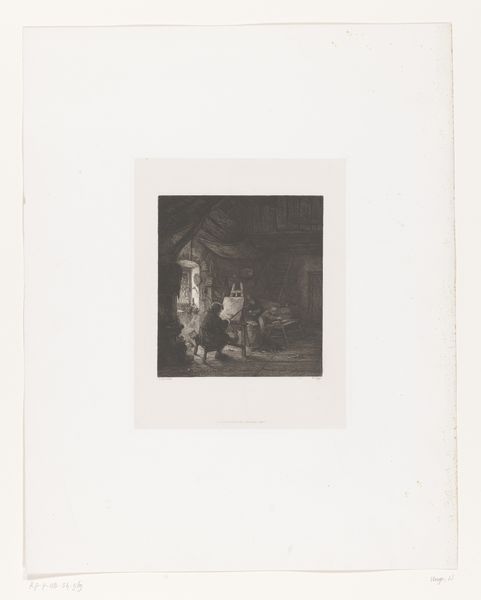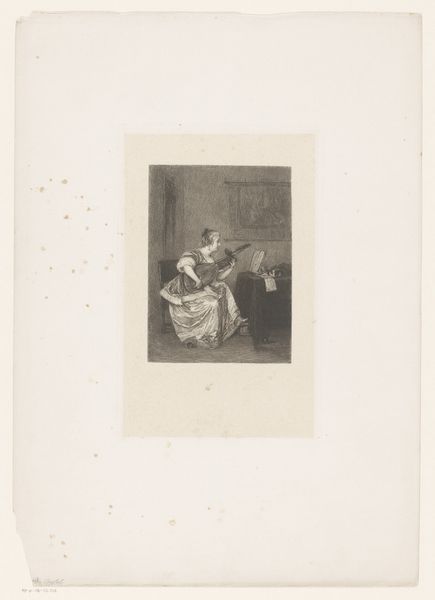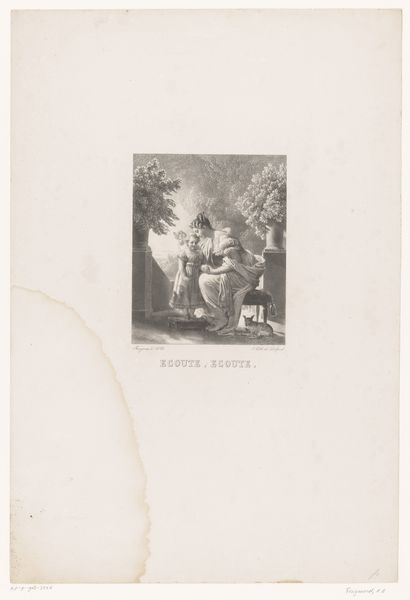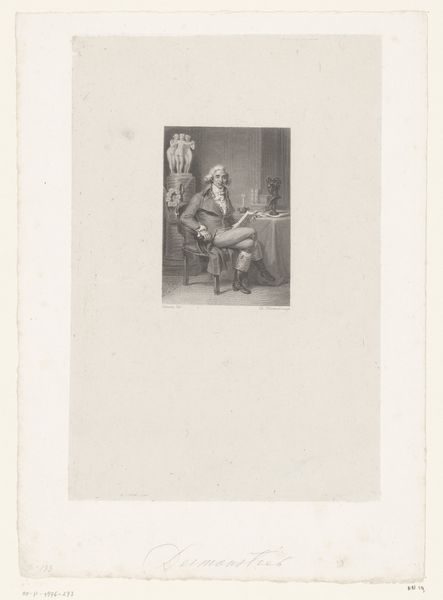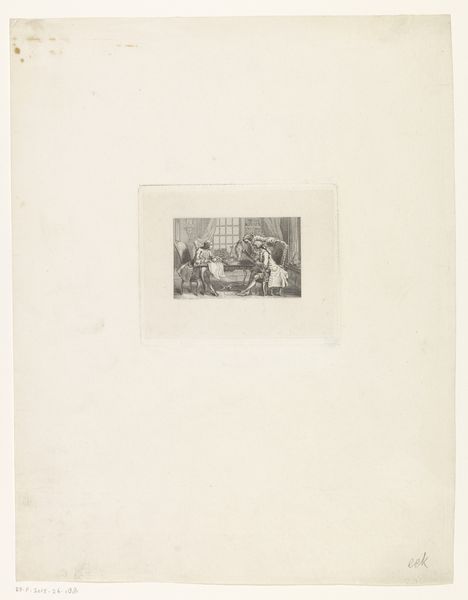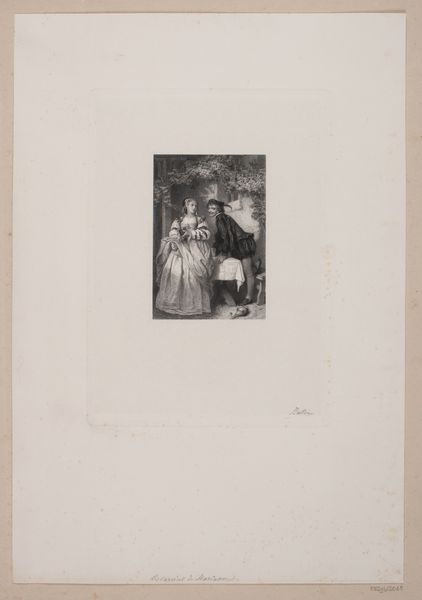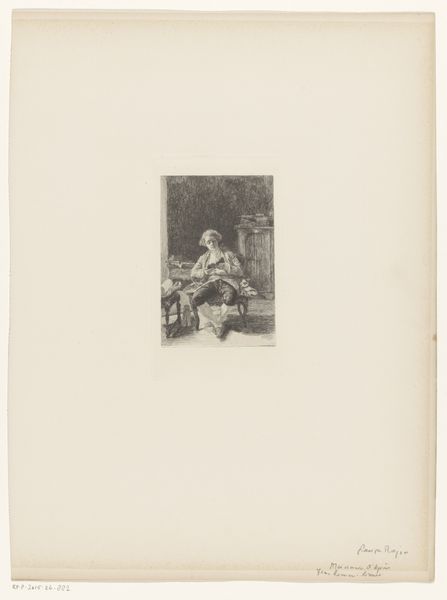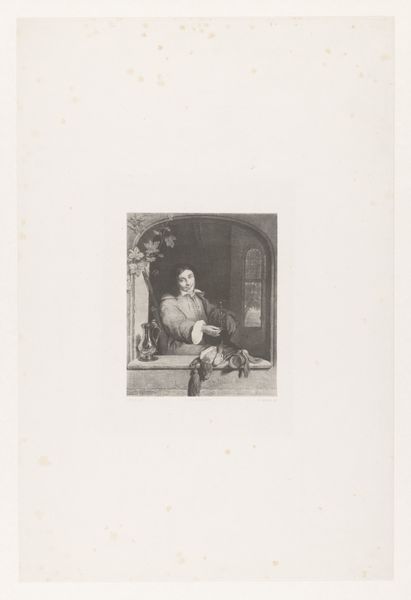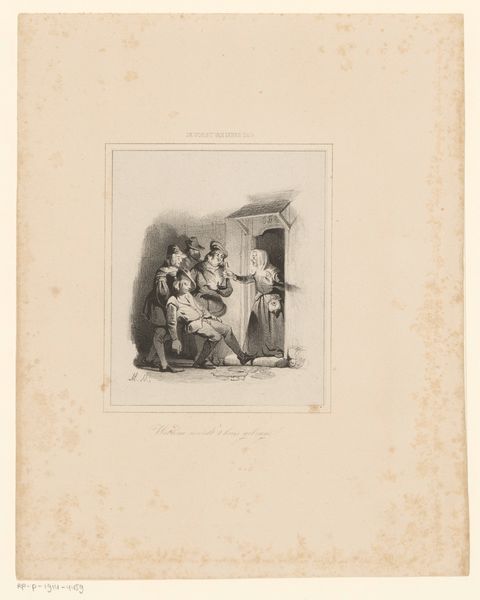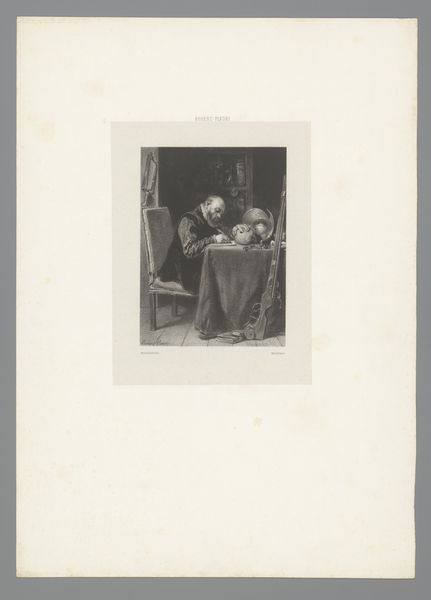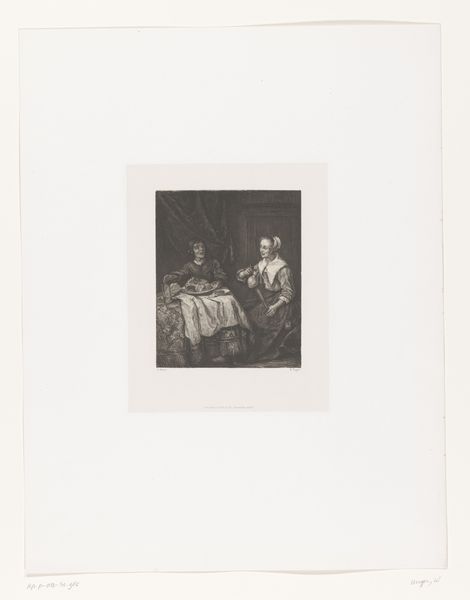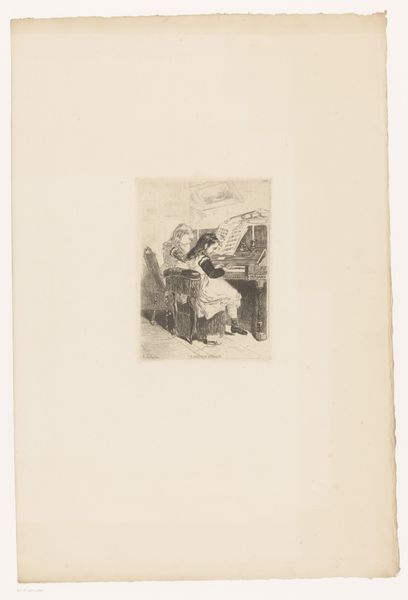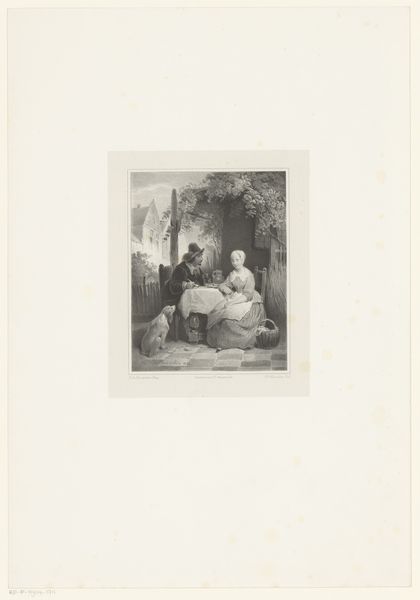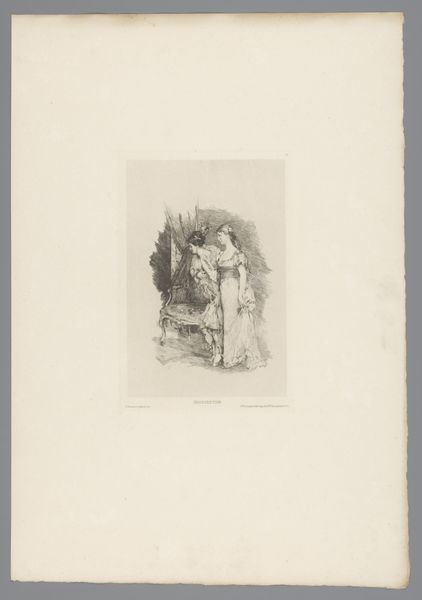
print, etching, engraving
narrative-art
etching
old engraving style
figuration
line
genre-painting
northern-renaissance
engraving
realism
Dimensions: height 147 mm, width 124 mm
Copyright: Rijks Museum: Open Domain
Curator: Here we have Charles Auguste Schuler's engraving, "Roodkapje," dating from between 1814 and 1859, depicting a scene of Little Red Riding Hood. It immediately strikes me as rather charming. The starkness of the lines and the confined domestic space create a certain tension, don’t you think? Editor: Confined, yes, but the material conditions intrigue me most. Look at the stark contrast in the labor represented: The grandmother engaged in some type of domestic task at a table, perhaps related to weaving or writing and the granddaughter presumably engaged in labor outside of the house. What kind of work did she do? Curator: True. Though it's difficult to see much without higher image resolution, the tight composition really emphasizes that, all framed neatly with that dark window and shadowed room. The way the light is concentrated on the faces and open book is certainly intentional. Note also how the line work directs the viewer's attention! Editor: Speaking of intention, what can we say about the circulation of prints at the time? This piece would have been relatively affordable, distributed among a growing middle class eager for art that reflects their domestic lives and values, creating a market where fairy tales reinforce these ideals. The very act of reproduction expands its reach and influence... Curator: Indeed, the distribution makes this particularly accessible. Looking at the details, I’m drawn to the subtle rendering of textures—the folds in the grandmother's dress, the softness of her face versus the youthful freshness of Little Red Riding Hood. These touches give the image its depth. Editor: Right, and within those textures are the clues. Consider the availability of fabrics, paper, and ink during that period, then question the tale itself and understand the cultural messages encoded within it as a commodity. Curator: Interesting, because despite knowing what's about to unfold, the mood remains curiously innocent; a cozy scene just before everything falls apart, heightened by this moment captured in print. Editor: For me, looking at it now, I cannot ignore that through the lens of labor and the accessibility and means of printmaking that Schuler both participated in the art world and reflected the burgeoning commercial world, each reinforcing the other. Curator: Well, it's been thought-provoking to consider the layered textures and how an artist translates narrative through form. Editor: Indeed, it really makes one think about how the production and consumption of art were entangled within larger societal forces.
Comments
No comments
Be the first to comment and join the conversation on the ultimate creative platform.
